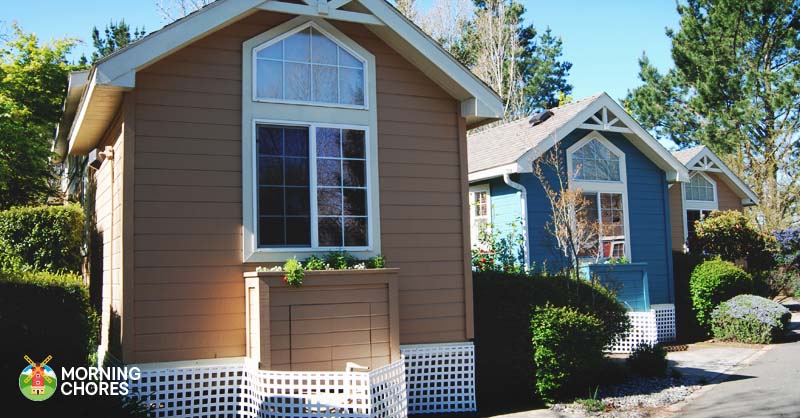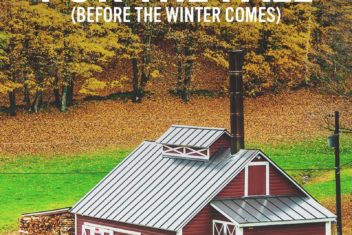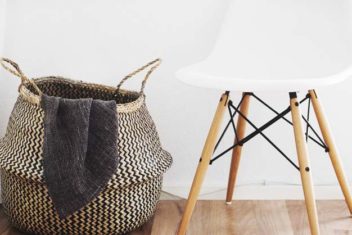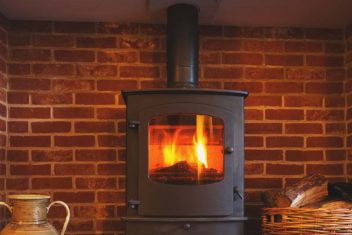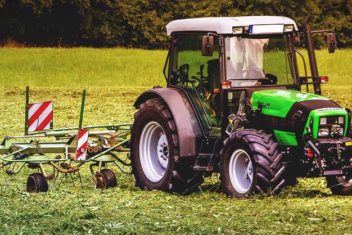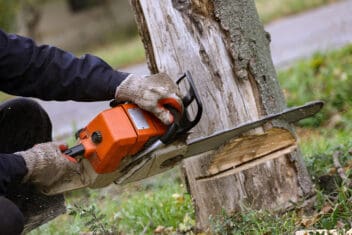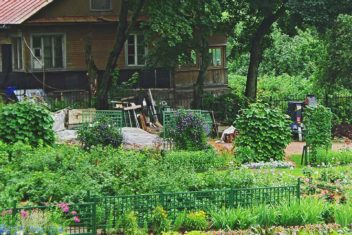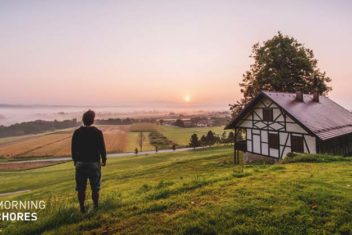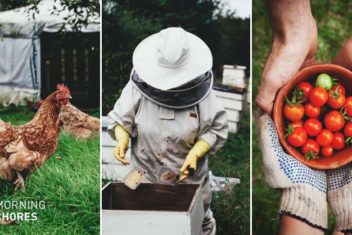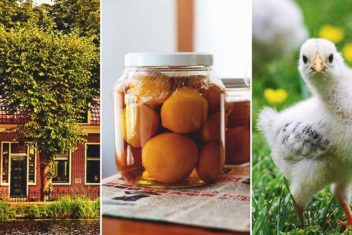However you live your life, live it with intention. Each day is precious; we should treat it as such. Our time on this earth is short, so prioritize the things that make each day worth it. Whatever that is for you, own it.—Betterway Home, Tiny House Living
This pretty well sums up my feelings on life. It is short so we better be intentional with each day we have because when you look back over your life you don’t want to say, “I wish.”
Instead, you hope to look back and say, “I did.” Which is why I think so many people are beginning to trade in possessions for moments.
But how are they doing this? Many people are breaking away from the idea of “normal.” They are making their own normal by building their own homes that are much smaller, less expensive, and less to keep up with.
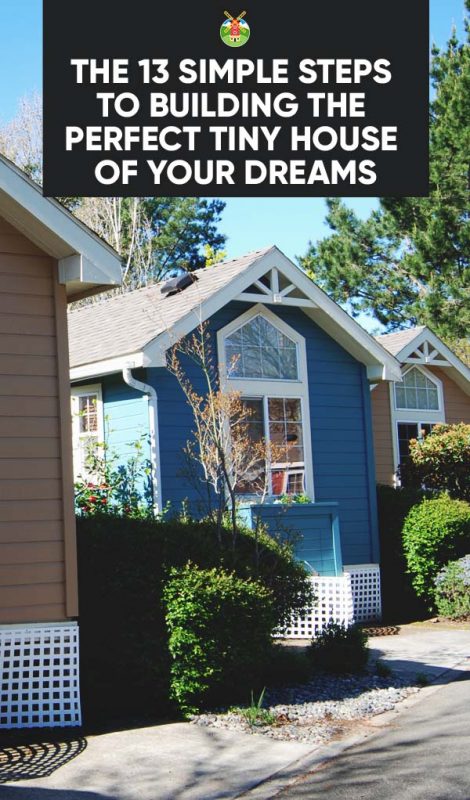
Building the Perfect Tiny House
So here is a broad overview of things you’ll want to consider and do in order to build a tiny home. Here is what you need to know:
1. Check Zoning Laws
Zoning is a big thing. People are particular about what type of housing they want in their area because it ultimately impacts the value of their home.
For this reason, there are many different zoning laws to consider.
So you should begin by checking into those and then finding out where would be an ideal place for you and your tiny house.
Now, there are some things to consider before you get all depressed by so many restrictive laws.
First, consider living in a rural area. The area I live in currently, they could care less what type of structure you live in.
But we are rural so people building what they can afford and living off of their land is quite common. We aren’t the ritziest part of the world, but I do love the freedom areas like this provide.
Second, consider traveling in your tiny home. Some people desire roots, but others desire to go and see what they can while they can. If this is you, then consider moving your tiny home around the country as you travel.
Then it is considered temporary housing and usually falls under different rules.
Third, consider finding a tiny house community that you could join and live with other people who share the same ideas as you do.
Finally, share the land of a friend. If owning land isn’t so much important to you, and you have a friend or family member that will allow you to put your tiny house on their land, then consider taking them up on it.
According to the Accessory Dwelling Unit laws, as long as there is a single-family dwelling on the property, then you can add extra buildings that are just considered to be more of a ‘guest house’ than a tiny house. Here is more detail on that.
Once you’ve taken all of the laws into consideration and found your landing spot, then you’re ready to take the building logistics into consideration.
2. Set a Budget
First and foremost, you need a budget. You also need to know how you are going to pay for your tiny house. I hate to be the bearer of bad news, but most banks are not up to date with the tiny house scenario yet.
So you’ll want to consider a few of these ideas on how to potentially finance your tiny home. A few of the suggestions recommend saving your own money, borrowing money from a loved one, seeking out an RV loan, taking on a personal loan, or even using credit cards.
However, keep in mind that a lot of these loan options do not give you the option of long-term loans. This means your payment could be higher because the loan will only last, let’s say, 10 years instead of the usual 20-30 year term.
So after you figure out how you are going to pay for your tiny house, then you’ll probably also have a number in mind of what you can actually afford.
From there, you’ll need to create a budget and know how much you plan on spending on each aspect of the house. This will lead you into probably needing to answer a few of the following questions as you fill out your budget.
3. DIY or Pay to Build?
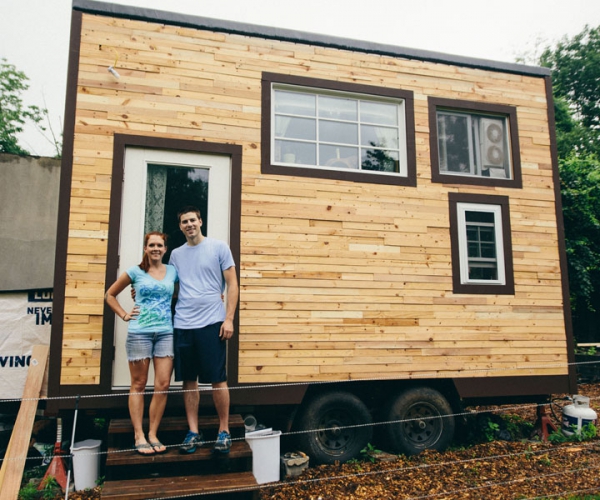
via Adorable Home
The first question you’ll need to answer when filling out your budget is, am I going to build this myself or do I need someone to build this for me?
If you know you are not able to build this tiny house yourself, then you’ll know the answer. If you think that you have the carpentry skillset (or know someone that does) then you’ll need to start figuring out time management to see if it is something you have the time to do. If so, then you just saved a lot on labor.
If not, then you’ll need start shopping around for a builder and find out how much they would charge for building a tiny house for you.
4. From the Ground Up
Truthfully, I’m considering building a tiny house on my property. I’m not going to live in it, but I recently downsized and don’t have a lot of room for guests.
So when my parents come visit, they usually stay in a hotel. Our hope is to take an outbuilding and glitz it up a little bit to turn it into a nice tiny house/guest house.
Which is something you should consider when creating your budget. Are you going to buy a prebuilt outbuilding? Is there a building that someone has offered to give you as a tiny house?
If so, then you could potentially save some money in the building process. You’ll need to look around and see if there is anything you could transform into your tiny house.
For example, some people take old silos and turn them into a tiny house. Some people use shipping containers, train cars, or even prefab buildings.
As you can tell, the options are pretty well limitless. So look around and see what you can find that would suit your needs but save time and money too.
5. Here, There, or Anywhere
The next question you need to answer is: Do you want a permanent tiny house or one that is portable? This will make a difference in your build as well.
For example, if you want a portable tiny house then you are pretty well stuck with the idea of having to build from scratch.
But if you want a permanent structure, then you have more options of using pre-existing buildings. If you decide to build it from the ground up as a permanent structure, then you are probably looking at a greater expense because of the foundation.
So these are all things you need to take into consideration when budgeting and considering the building as well.
6. Flat Bed or Gooseneck?
I had never really thought of the different trailer options if you decided to build a portable tiny house, but there are different options and they make a difference.
For example, you could build a tiny house on a flatbed trailer. It is pretty simple and straightforward with the layout.
But you could also choose a gooseneck trailer which would probably make the house easier to haul and give it a little different design as well.
So this is another choice that makes a few differences in the process.
7. Your Style in Your Home
Next, you’ll need to design your home. If you are remodeling an existing building, then you’ll need to plan out what you want in a home and see how you can reasonably fit it into this space.
Or if you are building your home from the ground up, you’ll need to see what you want in a home and how you can make it happen in the amount of space you have.
From my understanding, if you have a tiny home on a permanent foundation it is a little easier to put more of what you want in the home because you don’t have to worry about ceiling heights so much. But you do have to take that into consideration with a portable tiny home because it has to fit under bridges on the interstate.
8. Upgrade, Please
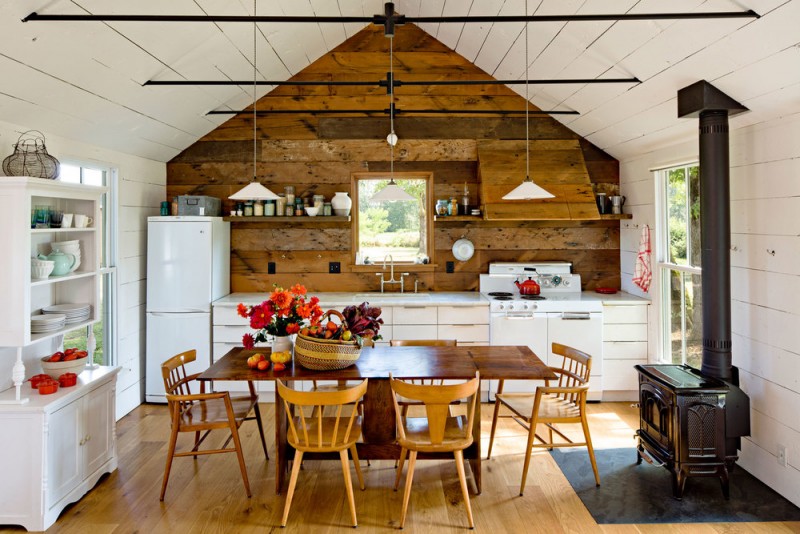
via Bonsoni News
After you have your home designed, then you’ll want to see if you think you’ll have any money in the budget for upgrades. If you do, then you can begin seeing if there is something that is extra special that would make your home pop out more.
If you don’t, then don’t worry about it. The thing is, you’ll hopefully have more money when living in a tiny house. Therefore, upgrades would give you a goal to work towards in the future. We’ve done this with each of our homes.
Instead of paying more money over 30 years to buy the home we wanted at the time of purchasing, we always buy homes that are on the low end of our budget that have potential, so we can work on them debt free over the next few years. It saves us money in the long run.
9. From the Outside In
Once you have everything decided, you are ready to begin your build. If someone else is building your home for you, then you won’t really have to worry about much besides just making decisions as they present themselves.
If you are building your own tiny home, then you need to know that you are going to begin by framing up the outside.
Now, if you are building on a permanent foundation this is where you would lay the foundation, dig the basement, etc. There are people who do build tiny houses with basements so whatever foundation your home will be on, it’ll obviously need to go first.
Then you’ll frame up the rest of the house.
If you are building on a trailer, then you’ll begin by framing up the house on the trailer. I’ve actually studied tiny house builds pretty closely over the years.
Usually, they finish the outside of the home with the framing, outside texture, doors, windows, and roof. Then they’ll move inside. This makes sense so that inside is fully protected when you begin fixing it.
10. From the Inside Out
The next step is to begin working on the inside. It’ll need to be drywalled, insulated, and made to look like a home with real walls.
Also, before finishing the walls, you’ll usually have an electrician come in and make sure that you have properly installed electricity or solar panels. You’ll want to make sure your water lines are run before you put your floors in.
Once the walls are built, the areas are defined, and the basic design of the home is actually finished then you are ready to move on.
11. The Basics
Next, you’ll need to add the basic necessities to your home. You’ll want to paint your walls before laying your floors.
Then you’ll need to put your floors in, the sinks, the toilet, shower, appliances, and anything else that most homes need in order to function properly.
At this point, your home should look like a real home instead of a skeleton, only on a smaller scale.
12. Your Finesse
This step could come here or a few steps up. It all depends upon your finesse. Some people want special things put into their tiny home to make it function better.
For instance, some people design drawers or desks to come out of the walls. This may have to be done at step 10.
But other times, smaller things are added like decorations that make the home feel like home to you.
So basically, whatever finishing touches your home requires, then this is where you’ll add those to make it your happy place.
13. Enjoy Your New Life
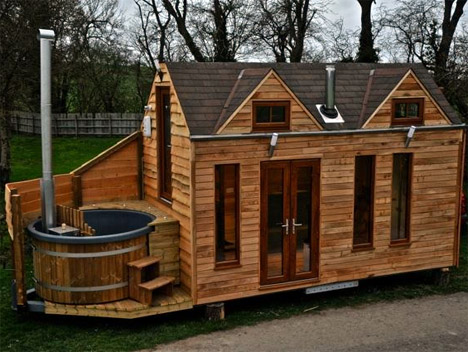
via Daphman
Finally, you’ll want to jump into your new home and get busy living your new life. You can enjoy smaller bills, less time spent cleaning, and a lot more time spent living the life you so desire.
Well, that is the basic overview of building a tiny house. Every build is different, just like it is when you build a regular full-scale house.
But I’d like to hear from you. Do you live in a tiny house? Do you have any recommendations for someone who is looking to build a tiny house? If you are considering building a tiny house, do you have any questions you’d like to ask people in our community who have walked this path before you?
We love hearing from you so please leave us your questions and comments in the space provided below.

